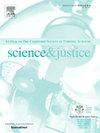Validation of a procedure for toxicants detection in baits and animal organs in case of suspected poisoning by using GC–MS and LC-MS/MS, as a part of systematic toxicological analysis based on 15 years of experience
IF 1.9
4区 医学
Q2 MEDICINE, LEGAL
引用次数: 0
Abstract
The aim of this study was to describe a Systematic Toxicological Analysis (STA) procedure adopted for the determination of toxicants in baits or samples derived from suspected poisoned animals. Extraction and purification were based on a QuEChERS-like technique, while instrumental identification was conducted using both GC–MS and LC-MS/MS. The procedure was designed for the routine screening of 42 target toxicants, along with untargeted screening based on GC–MS with AMDIS program (Automated Mass Spectral Deconvolution and Identification System) and with ExcaliburTM software. Validation of the target toxicants was performed by calculating the limit of detection, specificity, matrix effect, and carry over, using fortified samples of liver, gastric content and sausage. Limits of detection ranged between 0.02 and 2.5 mg/Kg and no significant interfering peaks due to matrix were observed. Carry-over was noted at concentrations greater than tenfold 10 mg/L. The matrix effect was estimated for all the matrices, with the most significant effect observed for gastric content.
The procedure was implemented in the laboratory to investigate authentic cases of animal poisoning, demonstrating that preliminary screening is crucial for reducing the criticalities such as response time and the suitability of analytes under investigation.

基于15年的系统毒理学分析经验,利用GC-MS和LC-MS/MS对疑似中毒的毒饵和动物器官中的毒物检测程序进行验证
本研究的目的是描述一种系统毒理学分析(STA)程序,用于测定来自疑似中毒动物的毒饵或样品中的毒物。提取和纯化采用QuEChERS-like技术,仪器鉴定采用GC-MS和LC-MS/MS。该程序设计用于42种目标毒物的常规筛选,以及基于AMDIS程序(自动质谱反卷积和鉴定系统)和ExcaliburTM软件的非靶向GC-MS筛选。使用强化的肝脏、胃内容物和香肠样品,通过计算检测限、特异性、基质效应和携带性来验证目标毒物。检出限在0.02 ~ 2.5 mg/Kg之间,未见明显的基质干扰峰。浓度大于10倍(10 mg/L)时,存在携带性。对所有基质的基质效应进行了估计,其中胃内容物的基质效应最为显著。该程序在实验室实施,以调查真实的动物中毒病例,表明初步筛选对于减少反应时间和所调查分析物的适用性等关键因素至关重要。
本文章由计算机程序翻译,如有差异,请以英文原文为准。
求助全文
约1分钟内获得全文
求助全文
来源期刊

Science & Justice
医学-病理学
CiteScore
4.20
自引率
15.80%
发文量
98
审稿时长
81 days
期刊介绍:
Science & Justice provides a forum to promote communication and publication of original articles, reviews and correspondence on subjects that spark debates within the Forensic Science Community and the criminal justice sector. The journal provides a medium whereby all aspects of applying science to legal proceedings can be debated and progressed. Science & Justice is published six times a year, and will be of interest primarily to practising forensic scientists and their colleagues in related fields. It is chiefly concerned with the publication of formal scientific papers, in keeping with its international learned status, but will not accept any article describing experimentation on animals which does not meet strict ethical standards.
Promote communication and informed debate within the Forensic Science Community and the criminal justice sector.
To promote the publication of learned and original research findings from all areas of the forensic sciences and by so doing to advance the profession.
To promote the publication of case based material by way of case reviews.
To promote the publication of conference proceedings which are of interest to the forensic science community.
To provide a medium whereby all aspects of applying science to legal proceedings can be debated and progressed.
To appeal to all those with an interest in the forensic sciences.
 求助内容:
求助内容: 应助结果提醒方式:
应助结果提醒方式:


